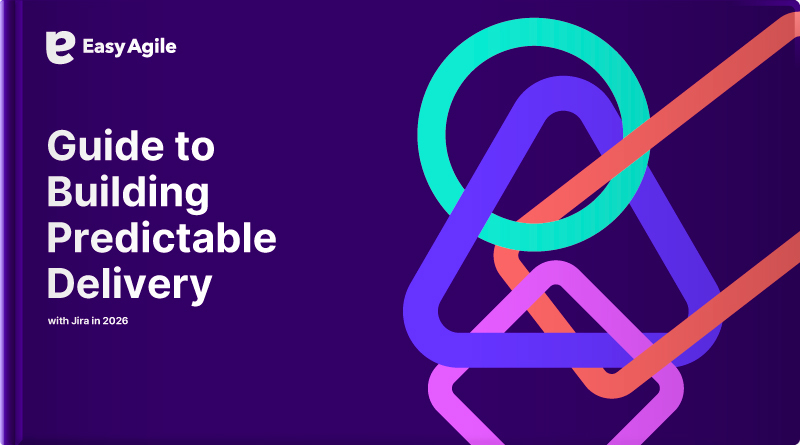Free guide: Team collaboration in Jira in 2026
If you’re looking for practical ways to improve your product and engineering team's collaboration and alignment in Jira in 2026, this guide is for you.

What’s inside
What changed in 2025 and how that impacts teamwork in 2026
AI got faster, teams worked more hybrid and async, and many companies cut down on tools and added stronger governance. In 2026, that means your team needs clear sprint goals, solid estimation, and decisions written where people can find them. The guide explains what to adjust so day-to-day team collaboration gets easier.
The Team Alignment Triangle framework
A simple, three-step framework to keep work moving: plan clearly, align on effort, and turn improvements into action. You’ll see what each part means for real teams and how they support team alignment without adding meetings or ceremony.
Step-by-step process to implement the Team Alignment Triangle in Jira
Practical guidance on making sprint plans readable in Jira with Easy Agile TeamRhythm, reaching shared estimates sooner, and turning retro insights into issues with owners and dates - so follow-through becomes part of delivery, not a side task. No new tools. No jargon.
What you’ll get out of this guide
- A plan people can actually follow - You’ll learn how to make the sprint plan easy to read, so everyone knows what’s first, what’s risky, and why it matters.
- Faster decisions with fewer meetings - Short notes and shared context make it simple to decide in the tools you already use. People in other time zones can pick up the right work without another call.
- Estimates you can stand behind - A light, shared way to discuss effort that focuses on differences and captures the "why" behind a change. Your forecasts will improve and sprint roll-over will drop.
- Dependencies that don’t derail you - You’ll spot and agree the order of work earlier. Hand-offs are clear, links are obvious, and cross-team planning is smoother.
- Retrospectives that lead to real change - Ideas become small tasks with owners and dates, kept next to the work. Progress is easy to see next sprint, so improvements actually happen.
- Clearer signal for automated systems and AI - When goals, notes and links are written clearly, search and AI surface useful context instead of noise. New people onboard faster and leaders spend less time chasing status.
Who it’s for
- Product and engineering leaders who want fewer status meetings and clearer hand-offs
- Scrum Masters and team leads who need alignment without adding meetings
- Distributed teams working across time zones that want plans, estimates, and action items to be easy to find in the tools they use every day
Works great with Jira and Easy Agile TeamRhythm
You don’t need a new tool stack to follow this guide. Use it with what you already use - Jira, boards, docs, and chat. The essence of this guide is to help you keep the plan, the estimate notes, the dependencies, and the follow-up actions close to the work so anyone can see what’s happening without another meeting.
If your team works in Jira, the guide shows where these pieces fit so day-to-day team collaboration is easier with Easy Agile TeamRhythm:
- Sprint planning: share a clear sprint goal and the order of work where people actually look.
- Estimation: record short notes on why an estimate changed, so forecasts don’t slip.
- Dependencies: make the important links easy to spot before they cause delays.
- Retrospectives: turn ideas into small tasks with owners and dates you can track.
Download the free guide and step-by-step instructions
Join the 10,000 product teams already using Easy Agile




































Jira Team Collaboration FAQs
Frequently asked questions
Everything you need to know about working better together in Jira
Use short notes, clear titles, and decision logs people can find. Time-box async steps like estimate votes. Easy Agile's free Team Collaboration Guide gives easy patterns for async collaboration that cut back-and-forth messages.
Turn ideas into small tasks with owners and dates, keep them next to the work, and review progress briefly next sprint. Easy Agile's Team Collaboration Guide shows how to keep retrospectives focused on action.
Focus on three things: a clear plan, shared estimates, and small improvements that are tracked. Our Free Jira Team Collaboration Guide explains how to do this with tools you already use, so people can move work forward without another call.
Make important links easy to see, agree what “blocked” means, and do a quick sequence check before scheduling. Our free Team Collaboration Guide shares simple dependency practices for smoother cross-team planning.
Align on effort earlier, plan to realistic capacity, and record the reason when work carries over. Easy Agile's free Team Collaboration Guide provides a short checklist to try next sprint.
Keep the sprint goal short, testable, and linked to why it matters. Make the order of work visible and call out key risks. Our Jira Team Collaboration Guide includes examples and a lightweight sprint goal template.
Team alignment means agreeing what matters now, how much effort it will take, and what we’ll change next - and writing that down where people can find it later. Easy Agile's free 2026 Jira Team Collaboration Guide shows simple ways to do this during sprint planning, estimation, and retrospectives.
Talk about differences, not who is “right.” Capture a short note when an estimate changes and compare with a few recent items. Easy Agile's Jira Team Collaboration Guide outlines practical estimation tips (including Planning Poker) that reduce re-estimates and sprint roll-over.